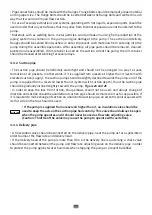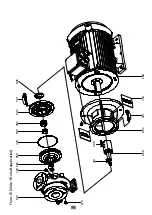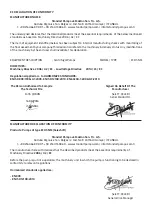
21
Table 8 (continue)
Table 9
Table 9 (continue)
(*)The values measured at a distance of 1 m from the pump in the free area on the sound reflecting surface
without sound curtain
(*)These values apply if the pump is operated in normal ordered operating values without cavitation.
(*)If the pump is operated at 60 Hz; increase the values in the table by 1 dB for 1800 rpm and by 2 dB for 3600
rpm.
<0.55
0.75
1.1
1.5
2.2
3
4
5.5
7.5
11
15
18.5
22
30
37
45
55
75
90
110
132
160
60
60
62
63
64
65
66
67
69
70
72
73
74
75
75
76
77
78
79
80
80
80
64
66
66
68
69
70
71
73
74
76
77
78
79
81
82
82
84
85
85
86
86
86
Motor Power - P
N
(kW)
Sound Pressure level (dBA) *
(Pump and Motor)
1450 rpm
2900 rpm
Motor Power - P
N
(kW)
Sound Pressure level (dBA) *
(Pump and Motor)
1450 rpm
2900 rpm
9- EXPECTED NOISE VALUES
Low speed
Speed too high
Impeller, check valve or strainer clogged
Impeller or strainer partly clogged
Impeller partly clogged.
Worn or broken impeller
Mechanical friction on the pump
Flow rate is less than the
required minimum flow rate
Bent shaft
Instable rotating parts
Pump operates beyond the area
of operation
Density or viscosity of the delivered
liquid is more than the specified value.
Enging fault
Check mains voltage and frequency or whether there is phase faults
in the engine
Reduce the pump speed, if possible or machine the impeller diameter
according to the manufacturer’s recommendation.
Clean the impeller, check valve or strainer.
Clean the impeller or strainer.
Clean the impeller.
Replace the impeller
Check whether there is obstacle or bending on the pump rotor.
Increase the flow rate. Use by-pass valve or line, If required.
Check the shaft and replace it, if required.
Check stability of the rotating parts.
Check the values of the area of operation
Use engine of higher power.
Check the engine. Engine ventilation is not proper due to its position.
POSSIBLE CAUSES
REMEDY METHODS
11
12
13
14
15
16
17
18
19
20
21
22
23








































